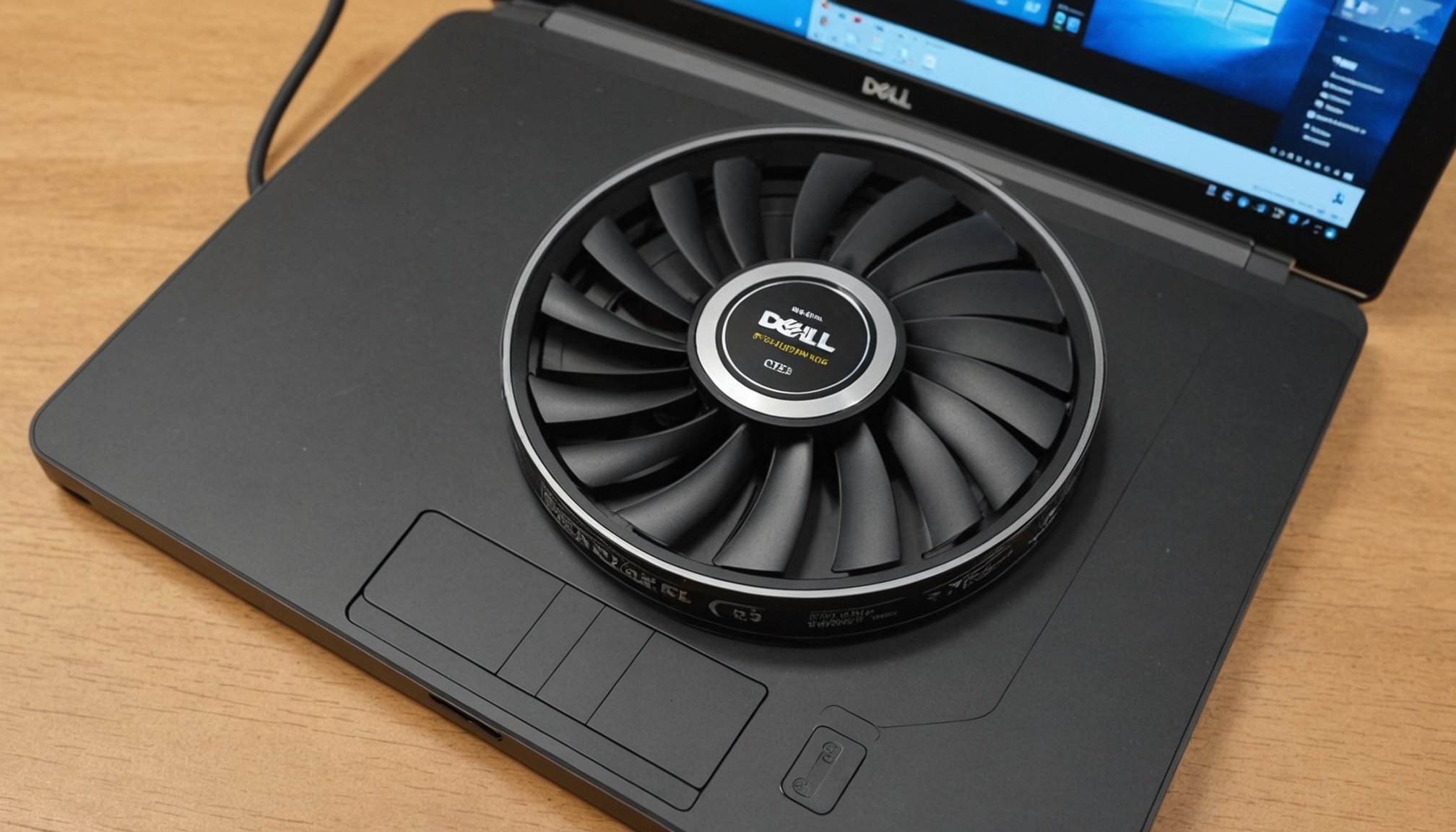Understanding External GPUs and Their Benefits
An external GPU offers a remarkable solution for enhancing a computer’s graphics capability, especially beneficial for light laptops like the Dell XPS 13. An external GPU, or eGPU, connects through a high-speed interface such as Thunderbolt 3, providing the machine a newfound ability to handle demanding graphics tasks. This feature is particularly important for users needing to run intensive applications without investing in a new, high-end computer.
Benefits of Using an External GPU with Dell XPS 13
Integrating an external GPU with a Dell XPS 13 transforms it into a capable powerhouse, significantly improving its graphics performance. The key benefits include:
Topic to read : Ultimate sound experience: your essential guide to configuring a sonos arc multi-room audio system with google assistant
- Graphics Performance Enhancement: An eGPU boosts the capability to manage graphic-intensive tasks, like gaming or video editing, pushing the graphics performance enhancement boundaries.
- Futureproofing Hardware: With an eGPU, the Dell XPS 13 gains flexibility, allowing for component upgrades without replacing the entire laptop.
Compatibility and Performance Improvements
To maximize the benefits, compatibility is essential. The Dell XPS 13 supports Thunderbolt 3, ensuring seamless integration with an external GPU. Once connected, users often observe substantial improvements in graphics rendering and computational tasks, allowing a lightweight laptop to perform like a high-end desktop, opening new possibilities for creators and gamers alike.
Checking Compatibility with Dell XPS 13
It’s crucial to ensure your Dell XPS 13 supports an external GPU if you’re thinking about enhancing graphical performance. Begin by confirming external GPU compatibility. This involves examining specific system requirements and hardware capabilities.
Have you seen this : Mastering virtualization: setting up a dedicated environment on your hp proliant dl380 gen10 to optimize multi-application performance
Identifying Supported Ports
The Dell XPS 13 typically includes Thunderbolt 3 ports, vital for connecting an external GPU. Ensure your device’s ports match the external GPU’s connection needs, as Thunderbolt 3 compatibility is non-negotiable for successful integration.
Ensuring Sufficient Power Supply
Power supply is paramount in maintaining optimal GPU performance. Check your external GPU’s power requirements against the Dell XPS 13’s capabilities. Insufficient power can degrade performance, underscore the GPU’s utility, or even cause hardware issues. Always utilize power adapters that align with the GPU’s needs to ensure stability.
Checking BIOS Settings
The BIOS settings might require adjustments to enable external GPU compatibility. Delve into your device’s BIOS setup by restarting the laptop and accessing the settings menu—usually by pressing a specific key (often F2 or Del) during boot-up. Look for options to enable or adjust the Thunderbolt 3 settings and ensure they are set up to facilitate the external GPU connection. Fine-tuning these settings can prevent hardware recognition issues and ensure smooth system performance.
Tools and Materials Required for Installation
Navigating the external GPU setup for your Dell XPS 13 necessitates the right installation tools and accessories. Missing just one component might derail the whole process.
To begin with, an essential list of tools includes a set of precision screwdrivers for opening components and adjusting connections. A reliable USB-C cable will ensure proper connectivity and data transfer between your laptop and external GPU. Also, having a sturdy power brick is crucial to supplying consistent power to the setup.
When it comes to selecting the appropriate GPU models for Dell XPS 13, options like the Razer Core X and Alienware Graphics Amplifier are highly recommended. Their compatibility and performance make them standout choices.
Before diving into the installation, it’s critical to have these materials on hand to avoid unnecessary interruptions. Additionally, arranging an anti-static wrist strap can prevent potential static damage during the installation.
By ensuring your setup environment is prepared with all the necessary tools and materials, you can focus on achieving a smooth, trouble-free external GPU installation. This proactive approach mitigates risks and maximizes performance outcomes in your computing experience.
Step-by-Step Installation Guide
Installing an external GPU for your Dell XPS 13 can significantly enhance its performance. Following these steps ensures a smooth setup.
Preparing the Dell XPS 13
Before beginning the external GPU installation process, make sure your Dell XPS 13 is prepared. Ensure the laptop is plugged into a power source to avoid interruptions. Back up your data in case of any unforeseen issues. Verify that you have the correct cable and dock compatible with your external GPU. This preparation stage is crucial to prevent complications during the process.
Connecting the External GPU
Next, connect your external GPU to the Dell XPS 13. Use a Thunderbolt 3 cable for efficient connectivity. Ensure the GPU is securely fitted into the dock, and confirm that all connections are tight. While proceeding with the Dell XPS 13 setup, turn on the dock and ensure power reaches the GPU. This step is vital for establishing a stable connection between the devices.
Installing Necessary Drivers
The final part of the installation tutorial is installing the necessary drivers. Visit the manufacturer’s website for the latest drivers specific to your external GPU. Once downloaded, follow the on-screen instructions to install them properly. These drivers allow your Dell XPS 13 to communicate effectively with the external GPU, enhancing its performance considerably.
Optimizing Performance After Installation
After the initial installation of GPU components, maximizing performance is crucial for seamless operation. Adjusting settings tailored to your specific GPU can significantly enhance graphics performance. Start by checking the GPU performance optimization options within your device’s settings menu. This may include tweaking graphical settings such as resolution and texture quality to match your needs while ensuring smooth operations.
Performance monitoring is another key aspect. Utilizing dedicated software can track the GPU’s performance over time, identifying bottlenecks or areas needing improvement. Popular programs provide insights into frame rates, temperature, and system stability. This ongoing assessment allows for real-time adjustments to maintain peak functionality.
Regular updates are vital for maintaining optimal performance. Manufacturers frequently release driver updates that improve compatibility and performance. These updates can resolve current issues and unlock further potential in your GPU settings.
To summarize, for effective GPU performance optimization, you should:
- Adjust graphical settings to suit specific needs
- Use monitoring tools to track performance metrics
- Ensure drivers are consistently updated
Adopting these strategies will help maintain and elevate your system’s graphical capabilities, resulting in an enhanced and fulfilling user experience.
Troubleshooting Common Installation Issues
When setting up a new device like the Dell XPS 13, many users face installation troubleshooting challenges. Understanding and addressing these common problems can significantly enhance your experience.
Identifying Connection Problems
The first step in installation troubleshooting is identifying connection problems. Issues such as Wi-Fi connectivity drops can be a frequent source of frustration. To tackle this, ensure your router settings are optimised for the Dell XPS 13. Sometimes, changing your wireless channel can resolve interference issues, improving your connection stability.
Resolving Driver Conflicts
Driver conflicts often arise with new installations. If your Dell XPS 13 is not functioning seamlessly, it might be due to outdated or conflicting drivers. To resolve such common problems, regularly update your drivers and consider using device manager tools to identify conflicts. This proactive approach can prevent many performance hiccups.
Performance Limitations
Understanding the performance limitations of the Dell XPS 13 is crucial. While it is designed for efficiency, pushing it beyond its intended capacity may lead to performance degradation. Balancing your workload and managing expectations can help maintain optimal performance, especially when multitasking or using resource-intensive applications.
These solutions offer practical steps for a smoother installation process, alleviating common setup woes.
Frequently Asked Questions
When it comes to external GPU technology, there are several common concerns and queries, especially from Dell XPS 13 users. Let’s address some of these to help you make informed decisions.
Is my Dell XPS 13 compatible with an external GPU?
Yes, the Dell XPS 13 is compatible, provided it has a Thunderbolt 3 port. This port is crucial for effective communication between your laptop and the external GPU, allowing for heightened performance. Ensure your model supports Thunderbolt features before purchasing a compatible external GPU to avoid any issues.
Will using an external GPU improve my laptop’s performance significantly?
Absolutely. An external GPU can drastically boost graphics performance, especially for resource-intensive tasks like gaming or video editing. You should expect a noticeable improvement in frame rates and rendering speeds, although the increase varies based on the GPU and task type.
Are there downsides to using an external GPU?
While beneficial, there are potential drawbacks. External GPUs may introduce additional power consumption and might not match the seamless integration of an internal GPU. They also require external power and sufficient cooling. However, these challenges are surmountable with the right setup and consideration of your specific needs.











